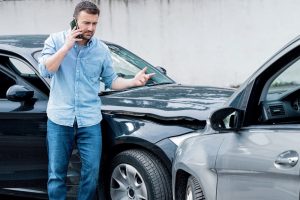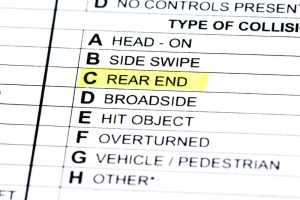How to Read an Accident Report
One vital piece of evidence you need to get your hands on following a significant car accident in which you were injured is the police accident report. While obtaining this document is not difficult, reading and understanding its contents can be tricky.
At Sampson Law Firm, our legal team wants to help you understand what kind of information an accident report contains and how it may be crucial for strengthening your car accident claim.
Obtaining a Kentucky Accident Report
 The first thing you should do after a collision is contact the authorities. Officers responding to vehicle accidents are required to fill out an accident report. These accident reports can contain vital information about the accident, who is involved, the damage sustained, and factors that may have played into causing the collision.
The first thing you should do after a collision is contact the authorities. Officers responding to vehicle accidents are required to fill out an accident report. These accident reports can contain vital information about the accident, who is involved, the damage sustained, and factors that may have played into causing the collision.
You can obtain a copy of this accident report from the Kentucky State Police. You may also mail in a written accident report request. Include your name, the date of the accident, and the location where it occurred, and send your request to:
Kentucky State Police Headquarters
Attn: Open Records
919 Versailles Rd.
Frankfort, KY 40601
If your accident was not attended by the Kentucky State Police, you would need to contact the police station in the jurisdiction where your accident took place to get a copy of your report.
Accident reports are not public records. To obtain one, you must be a person whose name appears on the report. That is, you must have been involved in the accident.
The Information in the Accident Report
 Your Louisville accident report will generally include multiple pages. On these pages is vital information gathered by the law enforcement officer who responded to the collision.
Your Louisville accident report will generally include multiple pages. On these pages is vital information gathered by the law enforcement officer who responded to the collision.
Page 1
The first page of an accident report should include information about the responding agency and give you a general overview of the accident. Page one of the accident report should be information about the date, time, and location of the crash, in addition to the number of vehicles involved and the number of injuries observed. The following sections will outline the manner of the collision and the road conditions at the time of the accident. Most of this information is notated through a series of check-marked bubbles. However, there is an additional section at the bottom of page one where the investigating officer can make notes of their observations of the accident. This section can potentially contain information not mentioned in other places of the report.
Page 2
The second page of the accident report will outline whether the accident caused property damage to nearby public or private property. If a vehicle veered off the road and hit a guardrail or fence, this section is where the damage will be documented.
Page two also includes a blank space where the responding officer can draw a diagram of what the crash looks like and the position of the vehicles involved.
Page 3
Page three is where you can find information about the individuals involved in the accident. The first section of page three includes a driver’s name, license information, and that individual’s suspected role in causing the crash. Codes used in this section will also indicate whether a person was transported to the hospital, where they were seated in the vehicle, and whether occupants were wearing seat belts.
An additional section on page three will include pertinent information about the vehicle, including the VIN and the extent of the damage observed to the car.
At the bottom of page three, the officer would indicate if the individual received a citation.
Page three is a unit page, meaning it details an individual traffic unit. A copy of this page is used for each “unit” involved in an accident. For example, you may have multiple “page threes” in your report. One will outline your information, and another indicating the other driver’s information and involvement.
Finally, if you were involved in an accident with a commercial truck driver, page three will have a section highlighting the carrier’s information, what cargo the truck was hauling, and if any cargo was damaged in the collision.
Contact an Experienced Kentucky Car Accident Attorney for Help
The volume of information thrown at you following a car accident can be overwhelming. You need someone who can help you sift through the paperwork and build a compelling case that offers you the best chance at recovering valuable compensation for your injuries.
After you were injured in a Kentucky car accident someone else caused, contact the Louisville car accident attorneys of Sampson Law Firm. We can help you obtain a copy of the accident report and walk you through the process of seeking fair compensation. Call our office today at (502) 584-5050 to set up a confidential legal consultation.
Related Posts:
